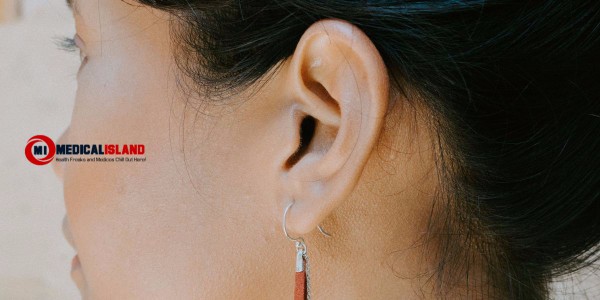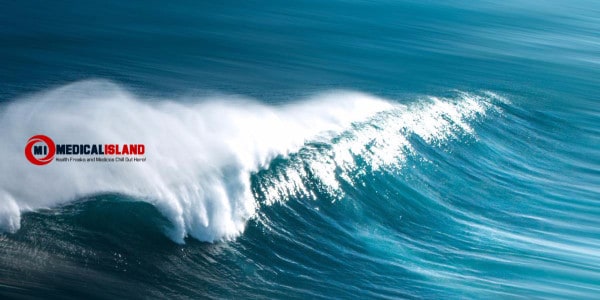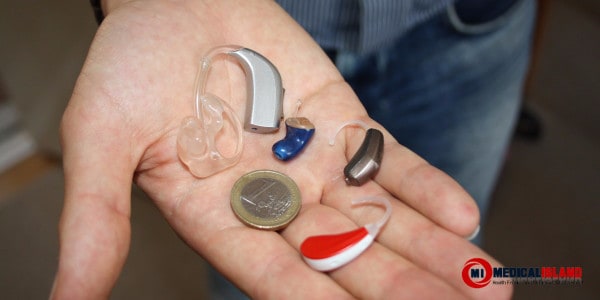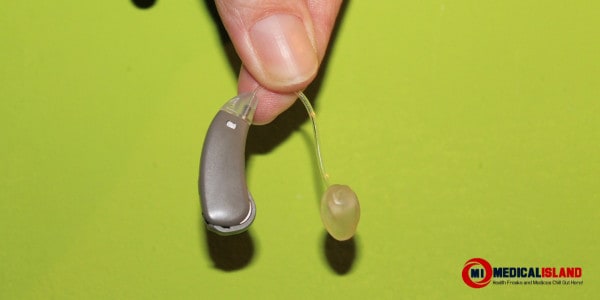Whether you have just been fitted with hearing aids or have worn them your whole life, you know how incredible they are. The ability to make hearing possible for so many different levels of hearing loss is amazing.
Though, as all hearing aid wearers know, these devices do not exactly replicate typical hearing. It is still a struggle to listen while you’re in noisy restaurants. And not being able to wear aids in the water limits communication.

But as with all technology, hearing aids are constantly evolving. The accessibility and reliability of waterproof aids continue to grow. There are some things to consider when shopping for waterproof aids.
1. Right Technology for Your Specific Loss
Just like eyesight, there are limitless types of hearing loss. Some senior users simply need pure amplification. Other wearers need complex programming to focus on loss at specific frequencies, and some models are better than others in these areas. It’s important to get a current and accurate audiogram to determine your needs.
You can then work with your audiologist to determine what brands and models of waterproof hearing aids fit your specific needs best. Together you can determine what other features are important to you. Are you wanting more noise cancellation? Does your audiologist need you to have a hearing aid with sophisticated programming capabilities?
2. Behind the Ear or In the Ear
Hearing aids come in several different styles. Two of them, behind the ear and inside the ear styles, can both address a full range of loss from mild to severe. They each have their own sets of pros and cons. You can again work with your audiologist to determine which style is best for your needs.
The biggest pro of inside the ear models is that they’re more discreet. They are, however, easier to misplace. And if the aid is for a child, the entire unit would need to be replaced with an increase in the size of the ear.
Behind the ear styles hook over the top of the ear and use tubes to connect to a mold in the ear canal. This style is able to handle the most amplification. It’s a great choice for growing children as only the less expensive earmold would need to be replaced with an increase in ear size. However, it is not as discreet and can be more susceptible to wind and background noise.
3. The Level of Water Resistance

Whichever style you choose, carefully research the level of water resistance. Many aids advertised as “waterproof” are truly water-resistant. It’s important to pick the appropriate level of resistance for your needs.
After testing, each hearing aid receives an IP rating. This number relates to how resistant they are to moisture and debris. This can give you a good idea of how the hearing aid will hold up to your lifestyle and the typical amount of exposure to the elements.
The rating is a two-digit indicator. The first number, ranging from zero to nine, relates to debris. It indicates how likely dust, dirt, or sand is to get inside the shell of the aid. The higher the number, the more protected the unit is from debris.
But the second number is what you want to look for regarding waterproof aids. This number also ranges from zero to nine. Look for a number as close to nine as possible for the more resistance.
The rating is affected by several factors. These include the pressure of the water, the depth of the water, and the amount of time the aid was exposed. The water is administered in varying degrees from a mist to full submersion to simulate realistic experiences.
Despite the testing and rating, many manufacturers don’t recommend intentionally submerging hearing aids. Moisture is one of the worst things for the hearing aid components like the microphone covers. And if the aid is submerged and the battery gets wet or is suffocated, the aid will stop functioning.
4. Your Lifestyle

Your lifestyle drives your selection of aids. What situations are you wanting to be comfortable wearing your hearing aids in that you currently can’t? This will determine the water-resistance level you need.
Are you simply looking for an aid that functions better in high humidity? Would you enjoy activities, like boating, more if you weren’t worried about your aids getting sprayed by the mist? Then you may not need as high of a water resistance for the amount of exposure.
There are several lifestyles that would benefit from the highest level of resistance possible. Athletes often have issues with their aids as the sweat permeates them during events. This is especially problematic in hot weather. People that spend time working in the water, like swim coaches or lifeguards, would also benefit from higher resistance.
Other lifestyle factors to consider are how you use your hearing aids. How do you need them to function in specific environments or in relation to other technologies? It’s important to consider other features besides water resistance.
Do you need an aid with Bluetooth technology? This is helpful in easily pairing with devices like your TV and smartphone. If you are often in loud situations, like working in construction, look for an aid with great noise management.
5. Cost and Insurance
When purchasing medical equipment, the cost is often an issue. This is no different with hearing aids. Your audiologist or their billing staff can guide you through this process.
Insurance is one of the most common sources of funds to purchase hearing aids. However, every policy can vary wildly from the other. Some policies only cover a portion of the cost of hearing aids or have a cap. Others may only cover aids for senior members. It’s important to review your policy documents so you can be prepared for your purchase.
There are other options should insurance not cover any or the entire cost of the aid. Aside from need-based programs, grants are often available. These vary by state, and some are income-based while others are not. A little research can help you find a program that works for you.
Conclusion

There are several factors and features to consider when choosing hearing aids. With the wide range of brands and styles on the market, there are countless choices. Fortunately, you are likely to find the one that is best for you.
Whether you are looking for an aid that is protected from the mist or allows you to be worry-free when sitting by the pool, there are resources and ratings to guide your purchase. Work with your audiologist to find the one that is best for you and your lifestyle. And you’ll soon be enjoying time hearing to the fullest in any situation.
